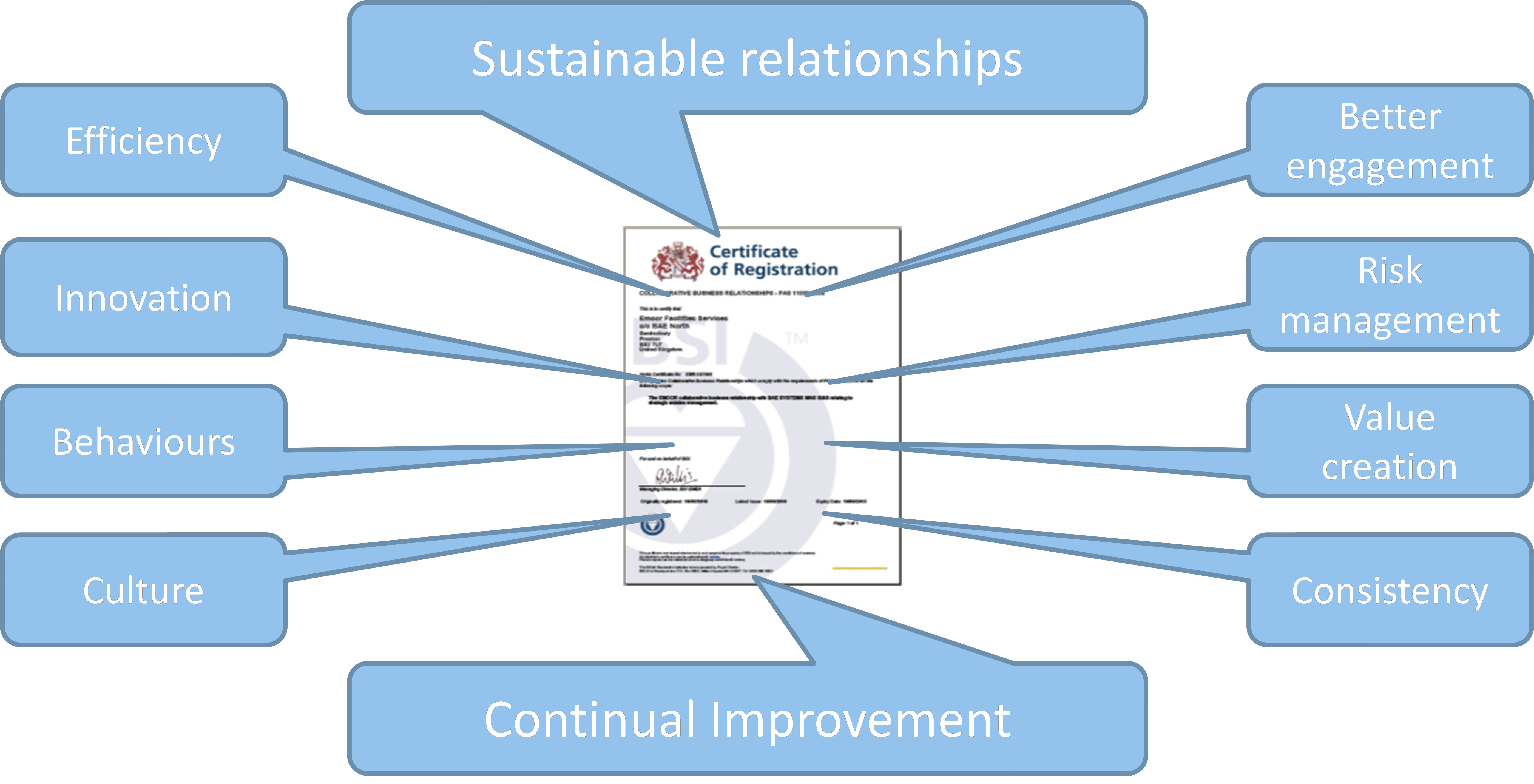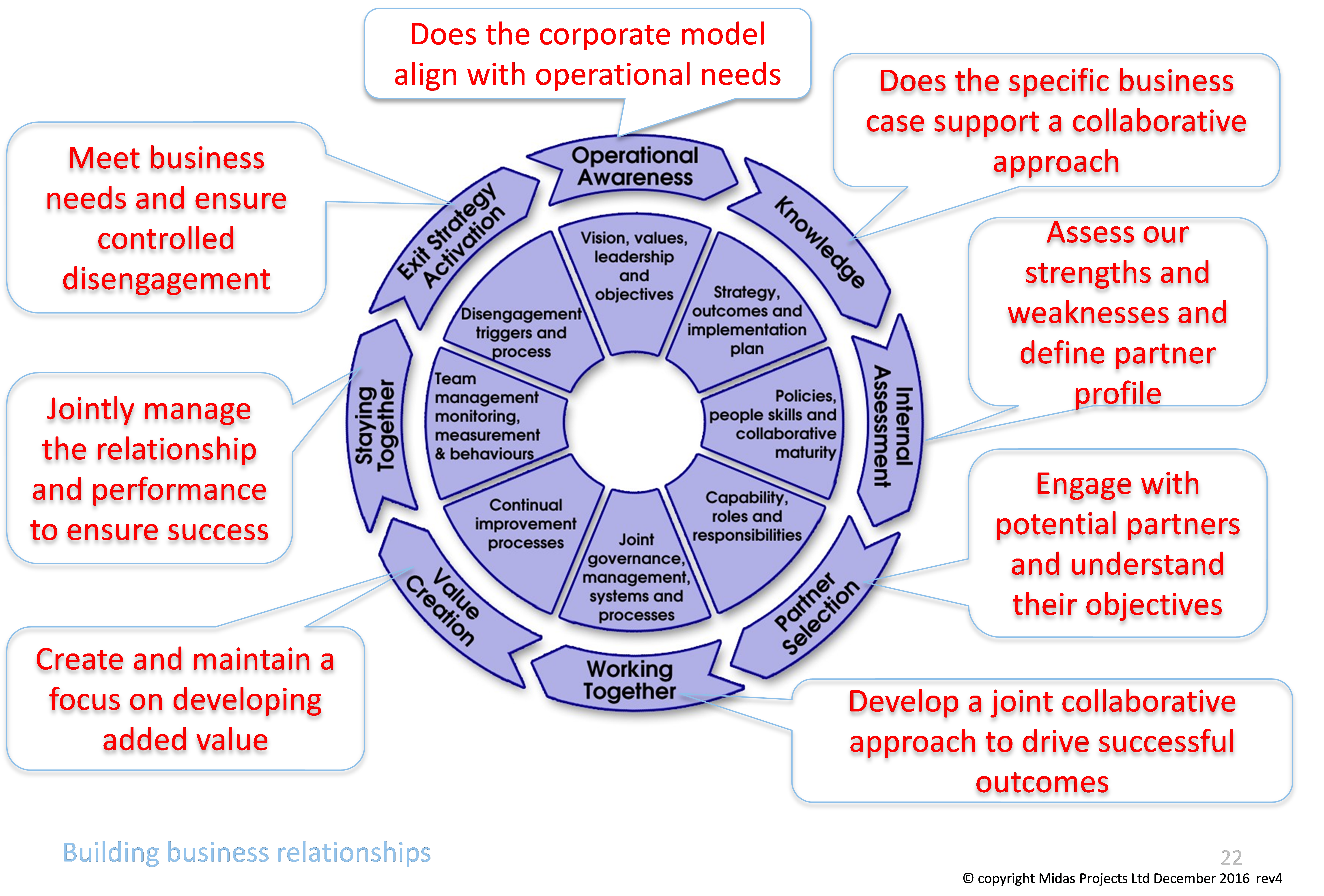Enhancing performance in complex projects through collaboration
David Hawkins, Institute for Collaborative Working (ICW), Operations Director
The Benefits Management SIG was delighted to welcome Dave Hawkins to the third Benefits Summit to share his views and perspectives on the proven positive influence and benefits that true collaboration can very often have in sustaining mutually beneficial Partner relationships in complex projects and programmes.
In the context of benefits management, it is staggering to know that the emergence of benefits management as a recognised discipline, over some 25 years, has achieved relatively little positive impact on the management and success of projects and programmes! Why? Well, there are many contributing reasons however, collaboration, which isn’t a new concept by any stretch of the imagination, is a crucial game-changing enabler that ensures that individuals and teams are behaving and interacting in the best possible ways to deliver mutual project success, benefit and value.
Collaboration as a Significant Project Enabler
Dave joked that when he started out on his collaborative journey it routinely felt like synchronised swimming with sharks! All too often any team building events also seemed like wasted effort as nothing seemed to change when the team got back in the office. Sound familiar?
There is no doubt that we live in a fast-paced, complex and constantly changing world where projects become even more complex and the organisations and stakeholders involved in these projects equally contribute to a greater level of complexity.
Recognition and management of the interdependencies between partners is a major factor in success and the realisation of benefits. Collaboration is a frequently used term but one which means different things to each party. The publication of BS 11000 the world’s first standard for collaborative business relationships and now the International Standard - ISO 44001 provides a foundation for a systemic approach to building robust and sustainable collaboration. Dave’s presentation provided the latest insights to the approach and recent academic research into the subject.
Dave briefed that the not-for-profit ICW was formed in 1990 to assist organisations to develop collaborative relationships for competitiveness and to share and promote best practice around Business Relationship Management, stating that collaboration is fundamentally about ensuring that business relationships are formed by committed organisations to maximise joint performance for achievement of mutual objectives and the creation of additional value.
The Benefits of Collaboration
Dave stated that because of recent research undertaken by Warwick University, there are many factors that have a bearing on collaboration such as team orientation, communications, sharing, creativity and leadership to name but a few. He also explained the fundamental benefits to be derived from true sustainable collaboration.
They are described below:
| 1. Better Problem solving | 7. Continuous improvement |
| 2. Reputation | 8. Better supply chain relationships |
| 3. Customer satisfaction | 9. New competence and skills development |
| 4. Increased trust | 10. Employee satisfaction |
| 5. Overall business performance | 11. Customer retention |
| 6. Innovation | 12, Lower operating costs |
The Meaning of Collaboration
‘The essence of collaboration is around Business relationships formed by committed organisations to maximise joint performance for achievement of mutual objectives and creation of additional value’.
ISO 44001: A Different Way of Working
Dave explained that ISO 44001:2017 specifies requirements for the effective identification, development and management of collaborative business relationships within or between organizations. It is applicable to private and public organizations of all sizes, from large multinational corporations and government organizations, to non-profit organizations and small businesses. The standard can be applied on several different levels. For example, individual relationships, alliances, partnerships, business customers, joint ventures, extended enterprise arrangements, end-to-end supply chains and full application organization-wide.
Getting the Approach Right
Lack of leadership, lack of trust, poor communications and unrealistic objectives were only a few challenges cited as factors that adversely affect collaboration. Therefore, it is vital that collaboration is created in a systematic way, under-pinned by appropriate mutually-beneficial behaviours, attitude and culture. ISO 44001 enables this systematic approach but, as ever, it relies upon the careful integration of people, processes, organisations and truly supportive relationships and behaviours. Or to put it another way - forming and sustaining the right culture both at individual and organisational levels.
The Relationship Journey
Of course, collaboration doesn’t happen overnight. Dave reinforced the importance of people and the need to manage and them in the right ways. Managing a complex environment of people is a huge undertaking and should never be under-estimated or under-valued. It isn’t just about schedules and plans!
Dave explained the importance of relationships and the need to avoid behaving like an obstinate donkey with no care for others who may share or contribute towards the same business objectives. The skills required to make collaboration work are potentially game-changing new attributes that can also seriously promote career objectives and ambitions.
Dave also explained that many people working in bigger and longer-term projects and programmes like HS2 will be retiring in the next six or seven years. Therefore, there is a continuous need to replace those individuals who then need to be able to develop new relationships and ultimately work together to achieve common goals and objectives. It’s All about Value
It’s All about Value
Dave joshed with the audience by asking if they had ever seen or read a contract that was written with success in mind. No! Indeed, it was widely accepted that contracts are written for failure! Surely this isn’t right and it certainly won’t support the values and factors around collaboration.
The creation of value is fundamentally driven by trust and confidence and can take some time to generate. On the other hand, it can literally take two minutes to completely ruin an excellent, supportive and collaborative relationship.
The cost of collaboration is clearly a function of the project or programme scenario in question. However, by ensuring the factors in the following diagram are achieved and sustained using a common framework like ISO 44001, the benefits, and therefore value, can be maximised fully.
And Finally…
Dave has an extensive career in projects and procurement within the construction industry. For over 40 years he has been associated with the development and implementation of major projects in many parts of the world. This has provided him with an insight into the many organisational and cultural challenges that projects and global operations can generate. He has been an active promoter of collaborative concepts and the development of extended enterprises through the building of alliances.
He is the architect of the CRAFT programme and was the technical author of the British Standards Institutions’ PAS 11000 collaborative business relationship standard, world first published in 2006 and chairman of the BSI committee that developed BS 11000, published in October 2010.
David led the development of ISO 44001 and is now leading the future developments of the following.
- Guidance to replace BS 11000 pt. 2
- Principles for collaboration
- SME collaboration
- Assessor guidance
- Fast track alliances
- Reputational contracting
- Internal collaboration
- Public private partnerships
Further reading
- Sun Tzu and the Project Battleground: Creating Project Strategy using the Art of War published by Palgrave Macmillan 2004;
- The Bending Moment: Energising corporate strategy published by Palgrave Macmillan 2005;
- Corporate Social Responsibility; Balancing Tomorrows sustainability with Today’s profitability published 2006 by Palgrave Macmillan;
- Raising the standard for collaboration; Published by British Standards 2013.
 David Hawkins has an extensive career in projects and procurement within the construction industry. For over 40 years he has been associated with the development and implementation of major projects in many parts of the world, which has provided an insight into the many organisational and cultural challenges that projects and global operations can generate. He has been an active promoter of collaborative concepts and the development of extended enterprises through the building of alliances.hed in 2006 and chairman of the BSI committee that developed BS 11000, published in October 2010.
David Hawkins has an extensive career in projects and procurement within the construction industry. For over 40 years he has been associated with the development and implementation of major projects in many parts of the world, which has provided an insight into the many organisational and cultural challenges that projects and global operations can generate. He has been an active promoter of collaborative concepts and the development of extended enterprises through the building of alliances.hed in 2006 and chairman of the BSI committee that developed BS 11000, published in October 2010.
David lead the development of ISO 44001 and is now leading the future developments.
- Sun Tzu and the Project Battleground: Creating Project Strategy using the Art of War published by Palgrave Macmillan 2004
- The Bending Moment: Energising corporate strategy published by Palgrave Macmillan 2005.
- Corporate Social Responsibility; Balancing Tomorrows sustainability with Today’s profitability published 2006 by by Palgrave Macmillan.
- Raising the standard for collaboration; Published by British Standards 2013
Write up by Bruce Phillips
Benefits Management SIG Committee Member
David Hawkins: Mindmap
Back to Benefits Summit 2017 mainpage
